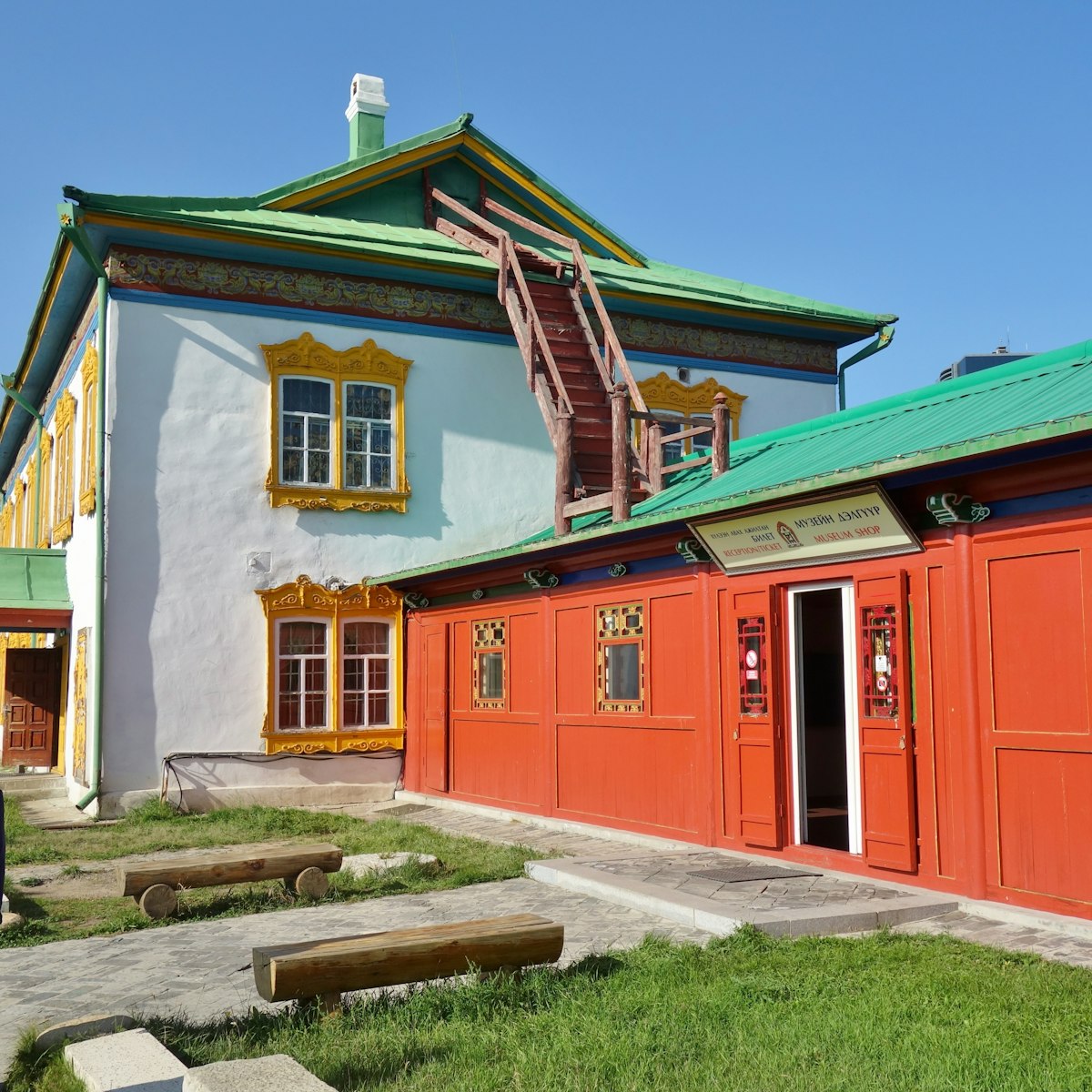Around the start of the 19th century more than 100 ВѕУМГО (temples) and khiid (monasteries) served a population of about 50,000 in Urga (the former name of Ulaanbaatar). Only a handful of these buildings survived the religious purges of 1937. It wasnтt until the early 1990s that the people of Mongolia started to openly practise Buddhism again. This monastery is one of Mongoliaтs most important, and also one of its biggest tourist attractions. The full name, Gandantegchinlen, translates roughly as тthe great place of complete joyт.
Building was started in 1838 by the fourth Bogd Gegeen, but as with most monasteries in Mongolia, the purges of 1937 fell heavily on Gandan. When the US Vice President Henry Wallace asked to see a monastery during his visit to Mongolia in 1944, Prime Minister Choibalsan guiltily scrambled to open this one to cover up the fact that he had recently laid waste to Mongoliaтs religious heritage. Gandan remained a тshow monasteryт for other foreign visitors until 1990 when full religious ceremonies recommenced. Today more than 600 monks belong to the monastery.
As you enter the main entrance from the south, a path leads towards the right to a courtyard containing two temples. The northeast building is Ochidara Temple (sometimes called Gandan SУМm), where the most significant ceremonies are held. As you follow the kora (pilgrim) path clockwise around this building, you see a large statue behind glass of Tsongkhapa, the founder of the Gelugpa sect. The two-storey Didan-Lavran Temple in the courtyard was home to the 13th Dalai Lama during his stay here in 1904 (when he fled Lhasa ahead of a British invasion of Tibet).
At the end of the main path as you enter is the magnificent white Migjid Janraisig SУМm, the monasteryтs main attraction. Lining the walls of the temple are hundreds of images of Ayush, the Buddha of Longevity, which stare through the gloom to the magnificent Migjid Janraisig statue.
The original statue was commissioned by the eighth Bogd Khan in 1911, in hopes that it might restore his eyesight т syphilis had blinded him; however, it was carted away by Russia in 1937 (it was allegedly melted down to make bullets). The new statue was dedicated in 1996 and built with donations from Japan and Nepal. It is 26m high and made of copper with a gilt gold covering. The hollow statue contains 27 tonnes of medicinal herbs, 334 Sutras, two million bundles of mantras, plus an entire ger with furniture!
To the east of the temple are four colleges of Buddhist philosophy, including the yellow building dedicated to Kalachakra, a wrathful Buddhist deity.
To the west of the temple is the УndУЖr Gegeen Zanabazar Buddhist University, which was established in 1970. It is usually closed to foreigners.
You can take photos (camera T7000, video T10,000) around the monastery and in Migjid Janraisig SУМm, but not inside the other temples. Try to be there for the captivating ceremonies т they generally start at around 9am, though you may be lucky and see one at another time. Most chapels are closed in the afternoon.






